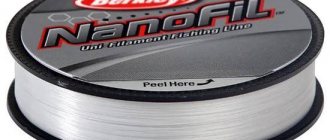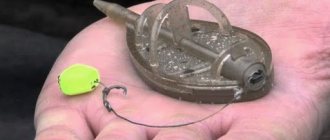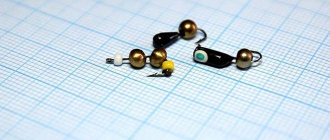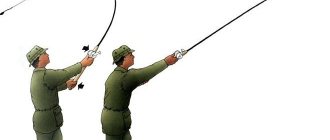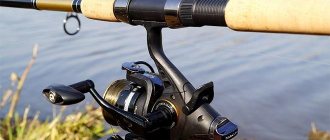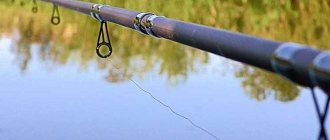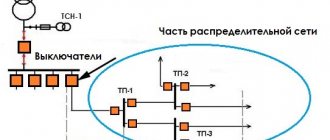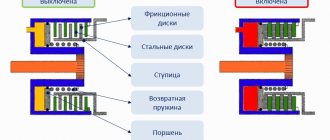Home » Basics » What is monofilament and how to secure it correctly when embroidering with beads?
Basics
Irina Vyshivaikina 06/12/2019
0
Monofilament for beads is a special thread that is used in embroidery. The main advantage of this thread is that it does not twist or separate during operation. Monofilament significantly simplifies the beading process and reduces the time wasted on straightening out the twists of regular thread. It is because of these qualities that monofilament has become so popular. Previously, needlewomen had to visit fishing stores and buy ordinary fishing line for their work, but with the popularity of fishing line, special monofilament threads were launched into handicraft stores.
What is monofilament for bead embroidery?
Many beginning needlewomen do not understand what monofilament for beads is. Monofilament for bead embroidery is a specialized thread that, like regular thread, is sold on a spool. This thread is often used in various types of sewing and beading. The thread got its name because it does not split in the longitudinal direction.
Manufacturers make monofilament from various materials:
- polyethylene;
- polyamide;
- nylon.
All these substances are easily melted at high temperatures and drawn out. The threads are pulled out with different forces, which will determine the thickness of the monofilament in the future. The main difference between monofilament and fishing line is its thickness. If the thickness of the fishing line is 0.3 - 1.5 mm in diameter, then the thickness of the monofilament is 0.1 - 0.3 mm.
Most often, needlewomen use white (transparent) bead thread. This color of monofilament is considered a classic in needlework and is often used in weaving and beadwork, working with sequins, leather, fur and shoe making.
Less commonly, black monofilament can be used in beading dark details. Of course, there is also colored monofilament on sale, but in practice it is used very rarely.
Types of fishing line for needlework and creativity
For production, polyethylene, polyamide, nylon and other chemicals that are easy to melt and stretch are used.
Based on thickness, all synthetic monofilament threads are conventionally divided into monofilament and fishing line. Monofilament is considered to be a material with a cross-section from 0.1 to 0.3 mm. If the synthetic fiber has a diameter from 0.3 mm to 1.5 mm, then it is called fishing line .
The color range of monofilament thread for needlework is not very diverse, and, as a rule, is presented in three versions:
- Black is used for working with dark materials.
- White is almost invisible and goes with any color palette.
- Colored ones were created for the sake of assortment and are not in wide demand among craftsmen.
Advantages and disadvantages
Like other materials, monofilament has its pros and cons. Advantages of monofilament in the process:
- the ability not to separate longitudinally and not to curl makes the process of working with monofilament quick and convenient;
- the strength of the monofilament will not allow the product to tear;
- the durability of the material will extend the service life of the product;
- does not fluff when cutting;
- it is possible to select the desired monofilament thickness;
- the thinnest diameter allows you to thread the thread through one bead several times;
- The transparent color of the monofilament will suit any product and fabric, and will not spoil the overall appearance of the work.
The disadvantages of monofilament in the process of handicrafts include:
- Excessive elasticity and insufficient strength of monofilament are not suitable for some work;
- the smoothness of the material does not allow you to quickly tie a knot;
- the materials from which monofilament is made cannot withstand high temperatures and can melt or deform when ironed;
- Some manufacturers' monofilament threads tend to stretch over time.
The quality of monofilament largely depends on the manufacturer, so if you do not have a proven, reliable manufacturer, take one spool of monofilament and only after checking its quality, buy more material.
How to choose the right one
When choosing monofilament, the angler must clearly understand for what fishing method and in what conditions he will have to use the fishing line. Accordingly, he must pay attention to the following parameters:
- Diameter and breaking load.
The best would be monofilament, in which the breaking load will be maximum with a minimum diameter. - Calibration
The monofilament should have the same thickness along its entire length. - Color.
The color is selected based on the fishing conditions. In most cases, colorless line with maximum transparency is suitable. Sometimes it is better to choose a color based on the color of the water, for example, yellow for fishing in peat bogs, blue for fishing in crystal clear water, green for fishing among thickets of vegetation. For carp fishing, brown or black fishing line is used. - Extensibility.
Some monofilaments have reduced elongation. These lines can replace braided and fluorocarbon. - Memory.
The lower the memory, the better. You can forcefully pull the monofilament between your fingers and see if it curls in rings or remains relatively straight. - Rigidity.
Both soft and hard fishing lines are in demand - it all depends on the fishing conditions. The degree of rigidity can be determined by unwinding some line from the spool and seeing how it hangs to the floor - in rings or relatively straight. - Wear resistance.
When fishing on the bottom, which can cause damage to monofilament, it is recommended to use a line that is coated or one that states that it has increased abrasion resistance. - Strength at knots.
With the seller's permission, you can tie a simple knot and try to break the monofilament - smoothly and jerkily. The general impression you can get is that if a monofilament breaks like a rotten thread, it is better not to buy it.
Expert opinion
Knipovich Nikolai Mikhailovich
Zoologist, hydrobiologist. I am interested in fishing at a professional level.
Attention! The quality of the monofilament is directly indicated by the quality of the packaging. The packaging must be flat with clearly written text. If an expiration date is indicated, you should make sure that the monofilament is not expired.
Preparing tools
The most basic step before creating a product of any size and complexity is the preparation of materials and tools.
You should purchase in advance:
- Beads. The main material in beading. It is best to purchase beads from European manufacturers (Czech, German). Compared to Chinese ones, it is of better quality and more durable. If you do not purchase ready-made embroidery kits, but create the product yourself, decide in advance on the color, shape and texture of the beads. Most often, round beads are used, although you can create embroidery from oval, triangular, and rectangular beads. You should also decide in advance on the diameter of the beads.
- Monofilament. Be sure to decide on the diameter of the monofilament before purchasing it. To work with larger beads, you will need monofilament with a larger diameter. When working with fine-grained beads, a thin synthetic thread is suitable.
- Wire. If your product contains complex decorations in the form of shapes and flowers, wire will help you create them. Its diameter is indicated on the packaging; the thicker it is, the more securely the product itself will hold.
- Needles. The needle is selected to the size of the beads of the future product. Not every needle is suitable for working with beads; some of them simply will not fit into the hole of the bead, so the needle is selected directly for the bead itself. The higher the number of needles on sale, the thicker the needle itself. During operation, needles may break, so we recommend purchasing several needles at once.
- Hoop. Most often they are used by beginning needlewomen. Some craftswomen find it more convenient to work with a hoop, since it is difficult to embroider on soft fabric without them. Before embroidering, the canvas is sewn to strips of fabric on a wooden hoop; you can also use a classic round hoop. If the embroidery is small, it will be convenient to work on a hoop, but if the product is large, they are simply not used.
- Take care of auxiliary tools: scissors, ruler, extra needle, table lamp.
How to embroider with beads using monofilament?
The process of bead embroidery itself is no different from embroidering with regular thread. It is important to choose the correct thickness of monofilament thread for bead embroidery. The most optimal diameter for work is 0.15 - 0.20 mm, and if larger beads are used - 0.2 - 0.3 mm. The main thing is to use monofilament that matches the diameter of the beads. The thinner the monofilament is used, the softer the product will be in the future. However, if you use monofilament for beaded jewelry, you should choose a thicker thread so that the beads do not stretch the fishing line in the future when wearing the jewelry.
One of the most important stages of the entire work is attaching the monofilament at the beginning and end of the work. Many beginning needlewomen do not really know how to fasten monofilament when embroidering with beads, since it tends to come undone due to its smooth structure. The main task when attaching monofilament is to ensure that it holds securely and at the same time is not noticeable at all from both the front and back sides.
Most often, to attach the monofilament, a double knot is made at the end, which will not allow it to pass through the threads of the main fabric on which the embroidery is being done. For better reliability, the first few beads are stitched twice, and the same is done when finishing the work. When completing the embroidery, secure the knot of thread to the wrong side of the fabric; using a needle, you can try to hide it in the middle of the last bead. Some needlewomen do not know how to secure monofilament thread when embroidering brooches with beads.
For better reliability, many coat the monofilament knot itself with clear varnish. The disadvantage of this method is that this knot will definitely be noticeable, but it will definitely not untie.
In addition to bead embroidery, monofilament has proven itself in the following beading techniques:
- mosaic;
- Ndebele;
- mesh;
- for weaving plaits;
- for necklace stands;
- for creating boxes;
- for making toys.
Monofilament is not suitable for bead embroidery and cutting.
Monofilament
Monofilament is widely used in sewing and handicrafts. This is a synthetic fiber that is made from polyamide or nylon. Monofilament is often confused with fishing line. Indeed, in appearance they are very similar. But monofilament is much thinner. In addition, it gives off a characteristic light shine.
Curiously, monofilament is also different from ordinary thread. The thing is that monofilament is made from one long fiber. In the case of thread, the fibers are twisted together. By the way, this sometimes interferes with sewing. When deformed, the components begin to peel off from each other, which can lead to product failure and re-production.
Monofilament comes in different thicknesses. The diameter of its fibers varies from 0.1 to 0.3 mm. The area where this product is used depends on this. For example, when embroidering, they take a denser monofilament, and for machine stitching, a thinner one. Monofilament is usually used to make hidden seams on trousers, skirts, and dresses. Lace and braid are also sewn on when decorating curtains or curtains. Monofilament is often used to create accessories - for example, felt hats. You can’t do without monofilament when making children’s soft toys. The noses, tails and ears of animals are attached using this fiber. Of course, they know what monofilament is in beading. Craftswomen choose it because it holds the beads well and does not tear. Monofilament has other advantages.
Advantages
It has good elasticity and can adapt to the shape of the future product, that is, it is endowed with a memory effect. Its fiber is very flexible and practically does not curl. Monofilament does not fluff, and if it is ready to break, it does not do so suddenly, but gradually stretches. The seamstress usually notices this process and can always replace the thread. If necessary, monofilament can be easily removed; it does not leave any traces on the surface of the fabric.
However, despite its significant advantages, monofilament is not without its disadvantages.
Flaws
In particular, it is not strong enough to, say, sew a sleeve or cuff to a product. Monofilament also poses a challenge when it comes to making a knot. In addition, she is afraid of high temperatures, which can be a problem when ironing clothes.
If we talk about colors, monofilament has a considerable number of shades. Although the most popular are the classic black and white. They are universal for sewing dark and light items. It is worth noting that today there are quite a large number of enterprises in the world that produce monofilament threads. The most famous of them are Gamma, Madeira, Wellcraft, HEMLINE.
Monofilament threads are usually produced in spools with different numbers of meters.
The most common options are 150 m, 200 m, 500 m, 1000 m. #yarn
Possible errors in use
Before starting work, it is important to choose the size of the beads with the size of the canvas. If this is not done, the work will look deformed and sloppy.
The main mistakes in bead embroidery with fishing line or monofilament:
- Herringbone effect. All beads must be attached in the same direction. If you attach the beads incorrectly, the canvas will begin to deform and the design will look deformed and sloppy.
- Uneven row of beads. When individual beads are tied with monofilament, but the rest are not, then the rows of embroidery become uneven and constrictions occur. The needle should fall exactly into the holes of the canvas from its own row and in no case into others, since then the work will bend in an arc.
- Tight sewing. If all the rows of beads are too tight, then after 10-15 rows the canvas becomes too tight and leaves less and less space for the next row of beads. Tight sewing is determined from the wrong side (if the holes in the already stitched canvas are much larger than the still free holes on the fabric).
Manufacturers of monofilament threads for needlework
On the domestic market you can find several well-known manufacturers of monofilament threads for needlework:
- Monofilament Gamma. A well-known company that produces monofilament threads at an affordable price. This spool of thread will last you a long time, but many people complain about the low strength of Gamma threads.
- Monofilament from Madeira. Manufacturer from Germany, uses 100% polyamide. These threads have proven themselves to be of high quality, but are available only in two colors - dark and transparent. Long spool, different monofilament diameters.
- Monofilament Corn. The Chinese company produces threads of average quality at an affordable price. Perfect for beginner needlewomen, durable for its price.
- Hemline monofilament. The Austrian company produces high-quality nylon threads up to 200 meters long. Sold in sets for experienced needlewomen.
Irina Vyshivaikina
Professional skills: Clothing designer; Artist
Brief biography and personal achievements: “I am inspired by the things that are around us.” Since childhood, I was interested in art and crafts, so I decided to devote my life to it. She received a higher education in design and released a collection of designer jewelry made from simple materials that can be found at home from any needlewoman. Afterwards, I decided to conduct master classes on creating similar accessories for everyone. She became a blogger and the author of the website domigolki.ru.


